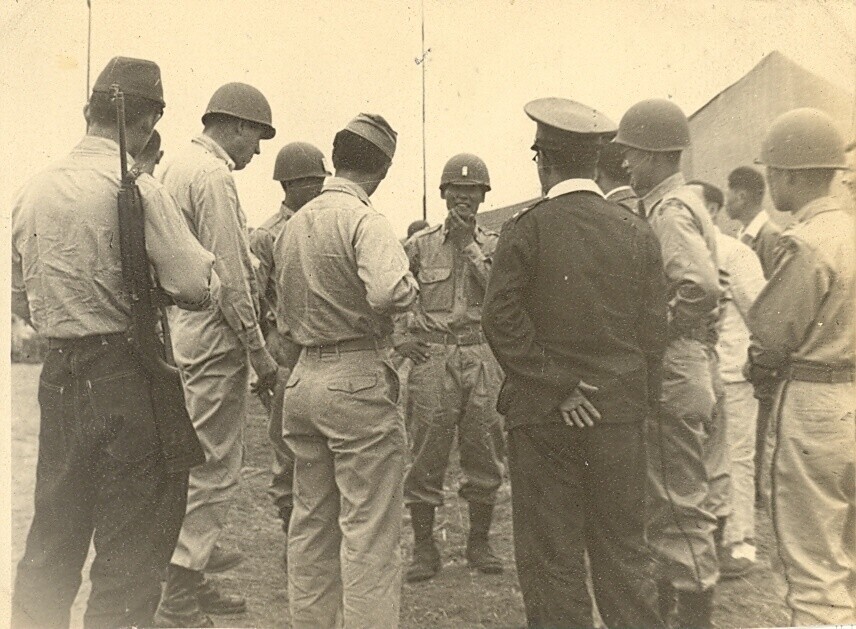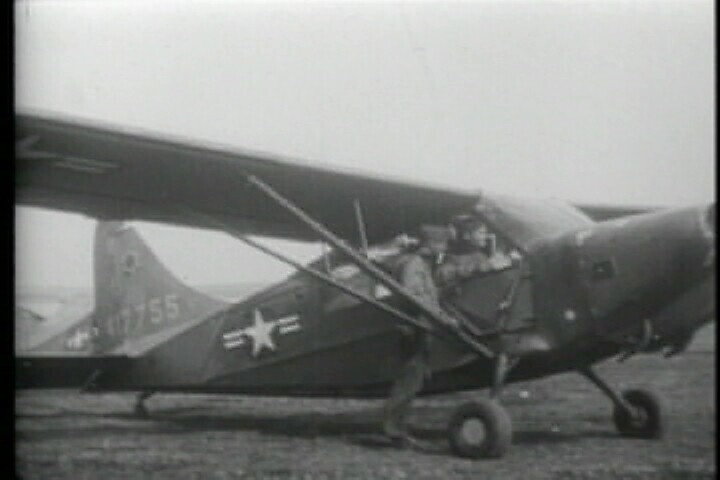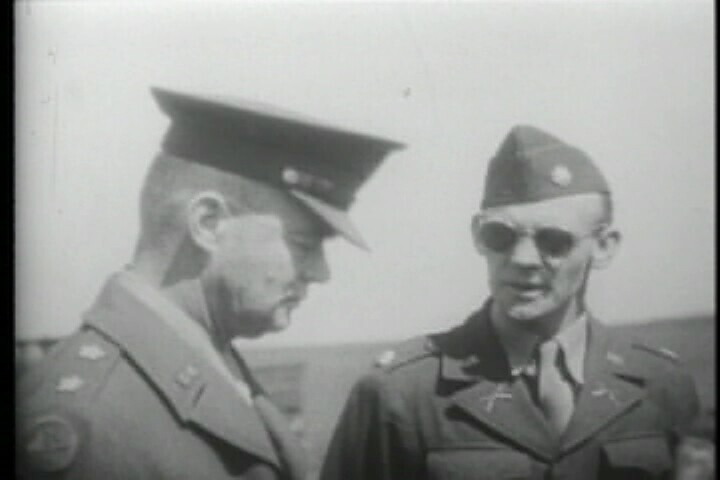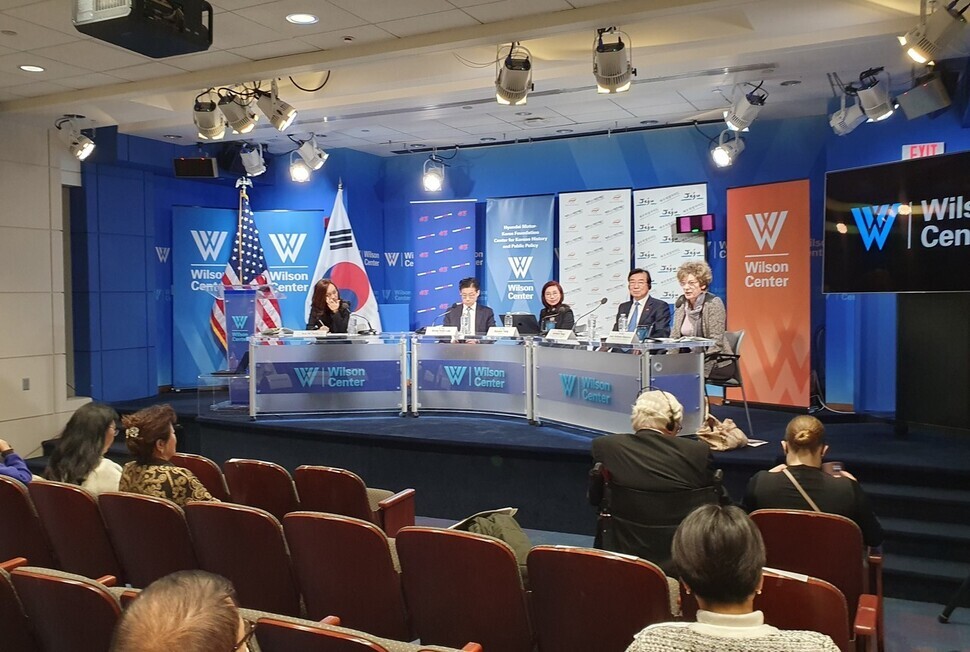hankyoreh
Links to other country sites 다른 나라 사이트 링크
‘My mission is suppression’: Jeju blood on the hands of the US military government

The Jeju April 3 Incident erupted during the time when South Korea was under the control of the United States Army Military Government in Korea (USAMGIK), which lasted from Sept. 8, 1945 through Aug. 15, 1948, when the government of the Republic of Korea was established.
The conclusion to the “Jeju 4•3 Incident Investigation Report” published by the South Korean government in 2003 assigns responsibility not only to then-President Syngman Rhee and the figures who traveled to Jeju Island for the suppression effort at the time, but also to the USAMGIK authorities and the Provisional Military Advisory Group (later renamed the United States Military Advisory Group to the Republic of Korea).
Presidents Roh Moo-hyun and Moon Jae-in attended memorial ceremonies on numerous occasions and formally apologized on behalf of the government for the state’s violent actions. But while the US is also a responsible party, there has been no response from it.
Various documents drafted by the US during the incident show how deeply involved it was in the suppression process.
After the armed uprising began on April 3, 1948, the military governor, Gen. William Dean, sent an April 18 cable titled “Cheju-Do Operation” to Jeju’s military governor, Lt. Col. John Mansfield, putting the South Korean Constabulary (predecessor to the ROK Army) under his operational control for use in suppression operations.
Ten days later, Lt. Maj. M. W. Schewe of the US Forces Korea command’s operational staff visited Jeju Island. With him at the time was Col. Rothwell Brown, commander of the 6th Infantry Division’s 20th Regiment, who passed along guidelines handed down by the USFK commander, Lt. Gen. John Hodge, instructing the Constabulary to immediately initiate operations. The guidelines also stated that the US military was not to be involved.
But on May 10 of that year, general election voting in two Jeju constituencies failed when the participants fell short of a majority.
Around the middle of that month, USAMGIK sent Brown to serve as top commander overseeing the military and police’s suppression efforts on the island.
His deployment went against Hodge’s orders just a month or so earlier barring direct US military involvement. The fact that a US colonel was overseeing the suppression meant that the US military was directly involved in the situation on Jeju Island.
South Korean newspapers at the time carried reports about “US reconnaissance aircraft in the skies, US warships on the coasts, and US jeeps on land.”

In an account by journalist Jo Deok-song written at the time, Brown stressed he was “not interested in the cause of the incident,” and that his only mission was to suppress the uprising. Brown ramped up the punitive operations. Between May 22 and June 30, the Constabulary arrested around 5,000 residents. Newspapers reporting on the situation described Jeju as a “sea of tears.”
The results of Brown’s operations were reported to the US State Department by the USFK command’s political advisor. The Army documents were treated with utter secrecy, with viewing restricted to only a limited few even within the State Department.
Various documents also attest to direct and indirect US military involvement after the Republic of Korea government was established.
On Nov. 3, John Muccio, a US special envoy in South Korea, sent an urgent cable to the State Department referring to lingering tensions over the South Korean government’s inability to wipe out communists on Jeju. Martial law was declared on the island on Nov. 17.
The bulk of the massacres during the period that the Jeju April 3 Incident refers to took place over the period from November 1948 to March 1949.
In a letter sent to South Korean Prime Minister Lee Beom-seok on Sept. 29, 1948, Brig. Gen. William Roberts, director of the US provisional military advisory group, said that the Constabulary’s operational command still lay with the USFK commander even after the establishment of the Korean government.
In another letter to the prime minister of Dec. 18 — a time when the scorched-earth operations were well underway — Roberts wrote that Song Yo-chan, commander of the 9th Regiment on Jeju Island, should be “highly commended on his accomplishment in changing islanders’ initial attitude of belligerency to one of wholehearted trust and cooperation.” He recommended that this be given “given great publicity be it press or radio, as well as by Presidential proclamation.”
Three days later, Chae Byeong-deok, the Defense Ministry’s chief of general staff, sent a reply to Roberts saying that Song and the US advisor had shown outstanding ability in carrying out a difficult operation. He also said he would suggest having the president issue a statement as Roberts had suggested.

Officials with the American Mission in Korea (AMIK) told Roberts on March 10, 1949, that active measures needed to be taken on the Jeju situation. The following day, Roberts replied that he had sent a strongly worded letter on the Jeju operations to the South Korean president and prime minister.
While this coordination was going on, AMIK representative Muccio sent an April 9 cable to the State Department claiming that Soviet spies appeared to be infiltrating Jeju without difficulty, although no evidence was given to back this up.
On Oct. 13 of that year, Muccio declared himself pleased to report that the Jeju operation had been a tremendous success, leaving no chance for the communist rebels to recover.
After the Korean War broke out, US officials continued to take an interest in the situation on Jeju, inspecting the island and recommending the assignment of a US advisor with the police, along with the creation of reconnaissance posts and immediate attacks. Many of these suggestions were acted on.
John Merrill, a former US State Department Northeast Asia bureau chief who wrote a master’s thesis and doctoral dissertation on the Jeju April 3 Incident, described it as a deeply tragic event that was also little known, a forgotten chapter in US history. The US military, he stressed, should acknowledge that it was there on Jeju at the time.

Initiating a conversation on Jeju April 3 in the US
Seventy-five years have passed since the Jeju April 3 Incident started, but identifying the extent of the US government’s responsibility remains an unfinished task. Calls to bring the truth to light have been met with no response from the US.
As the first demands for an investigation into the incident began emerging in the wake of the 1987 democratization movement in South Korea, civil society insisted that there needed to be an investigation into the US’ responsibility and an apology.
But at the time, this was more of a declarative demand. Since then, many USAMGIK documents have surfaced to offer some picture of the US’ direct and indirect roles.
In 2018 — the 70th anniversary of the uprising — related groups launched a signature campaign to demand a US apology. But the US has remained quiet.
At a symposium on the atrocity held last December in Washington, DC, John Merrill stressed that the US’ involvement in the incident was an objective fact, adding that the US would need to explain its position one way or another.
Former US Ambassador to South Korea Kathleen Stephens spoke of her own experience staying on Jeju in 1977, stating that Jeju April 3 and Jeju Island were significant in achieving larger goals than merely remembering and respecting the pain and sacrifices of Jeju residents.
Emphasizing that there was no one measure the US or South Korean government could take that would offer comfort and compensation for all the suffering, scars, and mistakes, she said that the measures would need to be taken in a step-by-step approach.
Lee Sung-yoon, a professor at Tufts University who is known to hold conservative views, said a stronger and closer alliance could be achieved if the US government showed more form of compassion and respect toward the Jeju April 3 Incident.
“If an American congressperson or vice president — and someday the president himself or herself — were to visit the Jeju 4.3 Peace Park, history would judge that as a moral action,” Lee suggested, adding that it would be unreasonable to expect an official apology from the US government at the current time.
He also said the step-by-step approach could start with a US Embassy official making a statement together with the victims.
But in the US, it is quite difficult to find any scholars researching the Jeju April 3 incident or any politicians with a basic understanding of it. For this reason, some have raised the need to promote awareness through efforts to persuade members of Congress and other politicians, together with government and private activities to raise awareness and use of the media to start a conversation.
Family members of Jeju April 3 victims have noted the various pieces of evidence pointing to the US involvement in the incident, stressing that it is time for the US to state its position. For that to happen, they say that US society first needs to be made more aware of the incident.
“We can’t really expect an apology when US academics are unaware and politicians are even less aware of Jeju April 3,” said a professor at Jeju National University, who asked not to be identified.
“Our first priority should be to raise awareness in the US about the relationship between the US and Jeju April 3,” they added.
The Jeju 4•3 Research Institute similarly emphasized the importance of “education and publicity activities within the US universities as part of the effort to raise awareness of Jeju April 3 in US society.”
“There also needs to be joint research by South Korean and US scholars to learn the truth about Jeju April 3,” the institute said.
“They might consider an approach where a US Embassy official in South Korea attends a commemorative ceremony for the 75th anniversary as a first step,” it suggested.
By Heo Ho-joon, Jeju correspondent
Please direct questions or comments to [english@hani.co.kr]

Editorial・opinion
![[Column] When ‘fairness’ means hate and violence [Column] When ‘fairness’ means hate and violence](https://flexible.img.hani.co.kr/flexible/normal/500/300/imgdb/original/2024/0516/7417158465908824.jpg) [Column] When ‘fairness’ means hate and violence
[Column] When ‘fairness’ means hate and violence![[Editorial] Yoon must stop abusing authority to shield himself from investigation [Editorial] Yoon must stop abusing authority to shield himself from investigation](https://flexible.img.hani.co.kr/flexible/normal/500/300/imgdb/original/2024/0516/4417158464854198.jpg) [Editorial] Yoon must stop abusing authority to shield himself from investigation
[Editorial] Yoon must stop abusing authority to shield himself from investigation- [Column] US troop withdrawal from Korea could be the Acheson Line all over
- [Column] How to win back readers who’ve turned to YouTube for news
- [Column] Welcome to the president’s pity party
- [Editorial] Korea must respond firmly to Japan’s attempt to usurp Line
- [Editorial] Transfers of prosecutors investigating Korea’s first lady send chilling message
- [Column] Will Seoul’s ties with Moscow really recover on their own?
- [Column] Samsung’s ‘lost decade’ and Lee Jae-yong’s mismatched chopsticks
- [Correspondent’s column] The real reason the US is worried about Chinese ‘overcapacity’
Most viewed articles
- 1China calls US tariffs ‘madness,’ warns of full-on trade conflict
- 2[Column] When ‘fairness’ means hate and violence
- 3[Column] US troop withdrawal from Korea could be the Acheson Line all over
- 4Could Korea’s Naver lose control of Line to Japan?
- 5[Editorial] Yoon must stop abusing authority to shield himself from investigation
- 6Naver’s union calls for action from government over possible Japanese buyout of Line
- 7[Column] Welcome to the president’s pity party
- 8[Column] How to win back readers who’ve turned to YouTube for news
- 9DongA Ilbo and the government are told to apologize for past civil rights violations
- 10S. Korea’s spy agency ramping up national security investigations to keep itself relevant, critics s